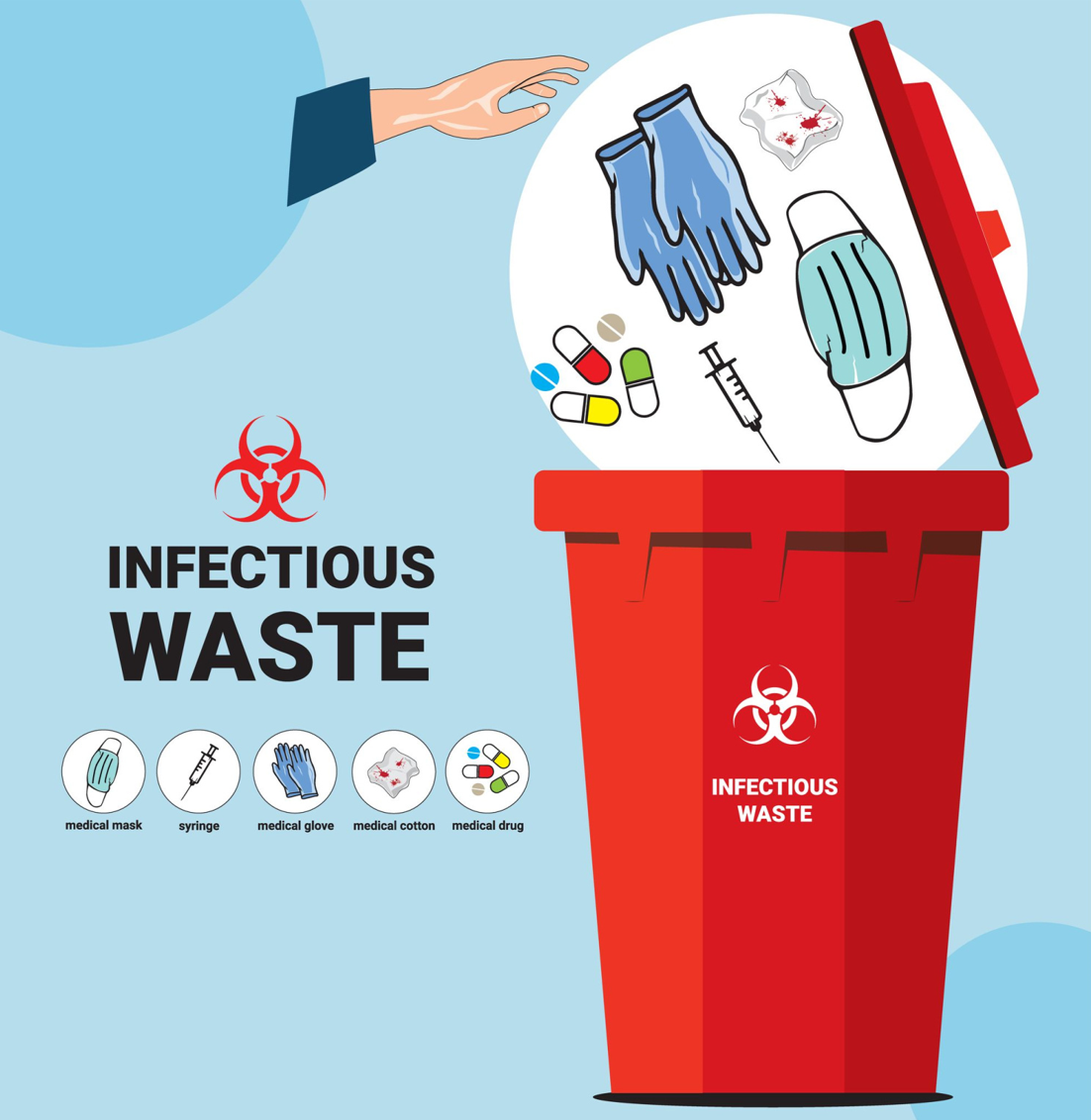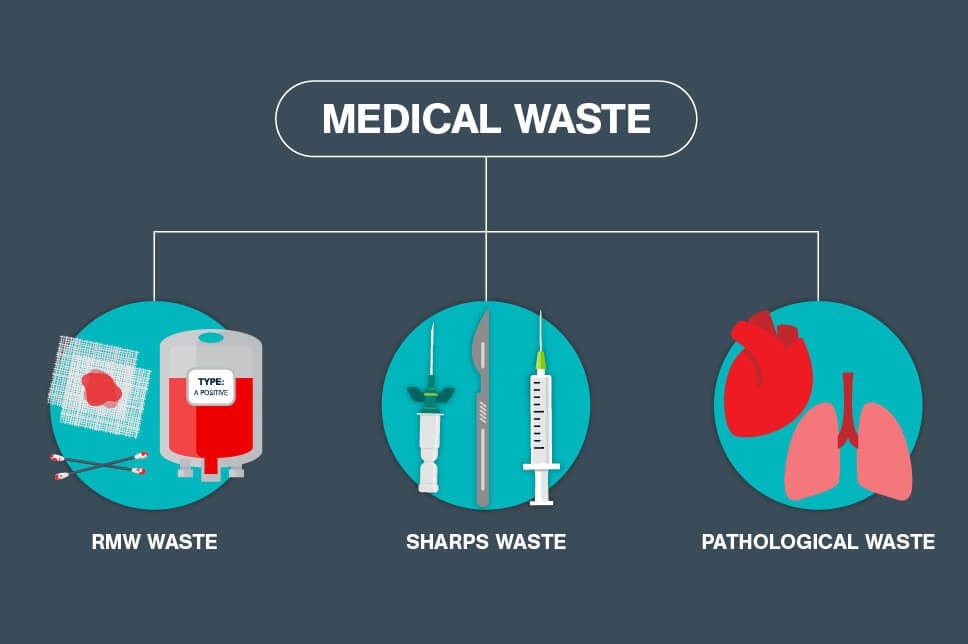Reliable and Responsible Medical Waste Removal: Protecting People and the World
Compliance and Rules for Medical Waste Disposal
Compliance and guidelines for medical waste disposal play a vital role in ensuring the security and wellness of both medical care experts and the general public. Appropriate administration of clinical waste is necessary to protect against the spread of infections, safeguard the environment, and keep public wellness. These guidelines incorporate various elements, including the classification and partition of medical waste, appropriate storage space and dealing with treatments, as well as transport and disposal methods.
Relevance of Conformity
The relevance of conformity with laws for clinical garbage disposal can not be overemphasized. Correct disposal of clinical waste is essential for guaranteeing the security and well-being of healthcare employees, patients, and the general public. Medical waste, that includes things such as made use of needles, polluted handwear covers, and biomedical waste, can posture serious wellness risks if not managed and gotten rid of effectively.
Conformity with regulations ensures that clinical waste is taken care of in a manner that minimizes the capacity for exposure to harmful compounds and infectious illness - medical waste disposal service. It aids protect against the spread of infections, such as HIV, liver disease B and C, and various other bloodborne virus. Conformity likewise plays a crucial function in safeguarding the setting by protecting against contamination of water sources, soil, and air
Failure to conform with policies can result in serious consequences for healthcare centers, including fines, lawsuit, and damages to their track record. Additionally, non-compliance may compromise the health and safety and security of medical care workers, patients, and the neighborhood.
Compliance with policies for clinical waste disposal requires adherence to certain guidelines and methods. These may consist of proper segregation, product packaging, labeling, and storage of clinical waste. It also includes making use of authorized disposal techniques, such as incineration, autoclaving, or landfilling, depending on the sort of waste.
Regulative Agencies and Bodies
Regulatory companies and bodies play a crucial role in looking after conformity with regulations for medical garbage disposal. These companies are liable for establishing guidelines, criteria, and procedures to ensure the safe and appropriate handling of medical waste. They impose and keep track of conformity to safeguard public health and wellness and the environment.
Among one of the most prominent governing agencies in the USA is the Epa (EPA) The EPA is in charge of controling the storage, transport, treatment, and disposal of medical waste. They establish guidelines for waste generators, transporters, and treatment facilities to adhere to, making sure that all essential preventative measures are required to stop the spread of conditions and contamination.
An additional vital regulative body is the Occupational Safety and Health And Wellness Management (OSHA) OSHA sets requirements and laws to safeguard employees from work-related risks, including those relevant to clinical waste. WasteX Medical Waste Disposal. They give standards for the secure handling and disposal of clinical waste to protect workers in medical care centers
Along with these federal companies, private states likewise have their own regulative bodies that manage medical garbage disposal. These firms might have their own specific guidelines and needs that have to be followed.

Classification and Partition of Medical Waste
To guarantee appropriate management of medical waste, it is important to identify and segregate it according to established guidelines and protocols. medical waste disposal. Category and partition play a crucial role in lessening the danger of infection, securing the setting, and ensuring the security of health care workers and the basic public
Medical waste is identified right into various categories based upon its possible hazard degree. These classifications consist of transmittable waste, pathological waste, sharps waste, pharmaceutical waste, chemical waste, and contaminated waste. Each group requires particular handling, transportation, storage space, and disposal approaches to lessen the danger of exposure and contamination.
Segregation of medical waste entails dividing different kinds of waste at the source. This procedure makes certain that waste with different risk degrees is not blended, reducing the capacity for cross-contamination and making disposal treatments a lot more efficient. Appropriate partition is achieved with using color-coded containers and labels, which help healthcare employees and waste management personnel manage each kind and recognize of waste properly.
In enhancement to classification and partition, health care facilities should also stick to regional, state, and government guidelines relating to medical waste management. These regulations lay out particular demands for storage space, transport, therapy, and final disposal of clinical waste, ensuring conformity and keeping public health and security.
Correct Storage and Handling Procedures
Correct storage and taking care of treatments play a vital function in making certain the secure and certified management of medical waste. Medical waste, that includes products such as utilized syringes, infected gloves, and ended medications, can position serious health and ecological dangers otherwise managed properly. Consequently, it is critical for health care facilities and other generators of medical waste to execute stringent storage space and taking care of procedures.
To start with, clinical waste needs to be kept in durable, watertight containers that are especially made for this function. These containers ought to be identified with the global biohazard symbol and words "medical waste" to plainly suggest the components. In addition, the containers ought to be maintained firmly shut to stop any kind of prospective leak or spillage.
Furthermore, it is important to set apart various kinds of medical waste to stop cross-contamination. Sharps, such as needles and scalpels, ought to be kept in puncture-resistant containers to minimize the danger of injuries - WasteX Medical Waste Disposal. Chemical waste, such as solvents and anti-bacterials, need to be stored individually from other sorts of clinical waste to stop dangerous direct exposures or chemical responses

Transport and Disposal Methods
Medical care facilities have to make certain the secure transport and correct disposal of their clinical waste to conform with policies and protect public health and wellness. Transportation and disposal techniques play an important function in stopping the spread of contagious conditions and minimizing the ecological influence of medical waste.
To move clinical waste, health click here for more care centers should utilize puncture-resistant and leak-proof containers that are classified with the biohazard sign. These containers should be firmly sealed to stop any kind of leakage throughout transport. Furthermore, medical care facilities must develop procedures for the transport process, consisting of using trained employees and specialized automobiles.
As soon as the clinical waste reaches the disposal facility, it undergoes numerous methods of treatment. One typical technique is incineration, which involves shedding the waste at heats to damage pathogens and decrease the volume of waste. Another method is autoclaving, which uses heavy steam and stress to sterilize the waste. After therapy, the waste is normally sent out to a land fill or a waste-to-energy center for final disposal.
It is important for health care centers to work with accredited and permitted waste management companies to guarantee appropriate transportation and disposal of medical waste. These companies have the proficiency and resources to deal with clinical waste safely and in conformity with guidelines.
Conclusion
In conclusion, compliance with laws for medical waste disposal is of utmost importance to make sure public health and wellness and security. Generally, adherence to conformity and laws is required to effectively take care of clinical waste.
Clinical waste, which includes products such as made use of needles, polluted gloves, and biomedical waste, can present serious wellness threats if not taken care of and disposed of properly.
These classifications include infectious waste, pathological waste, sharps waste, pharmaceutical waste, chemical waste, and contaminated waste.Segregation of medical waste involves dividing various types of waste at the source. Proper segregation is achieved with the use of color-coded containers and labels, which help healthcare workers and waste administration workers manage each type and identify of waste correctly.
Chemical waste, such as anti-bacterials and solvents, need to be saved individually from other kinds of clinical waste to avoid chemical responses or dangerous direct exposures.